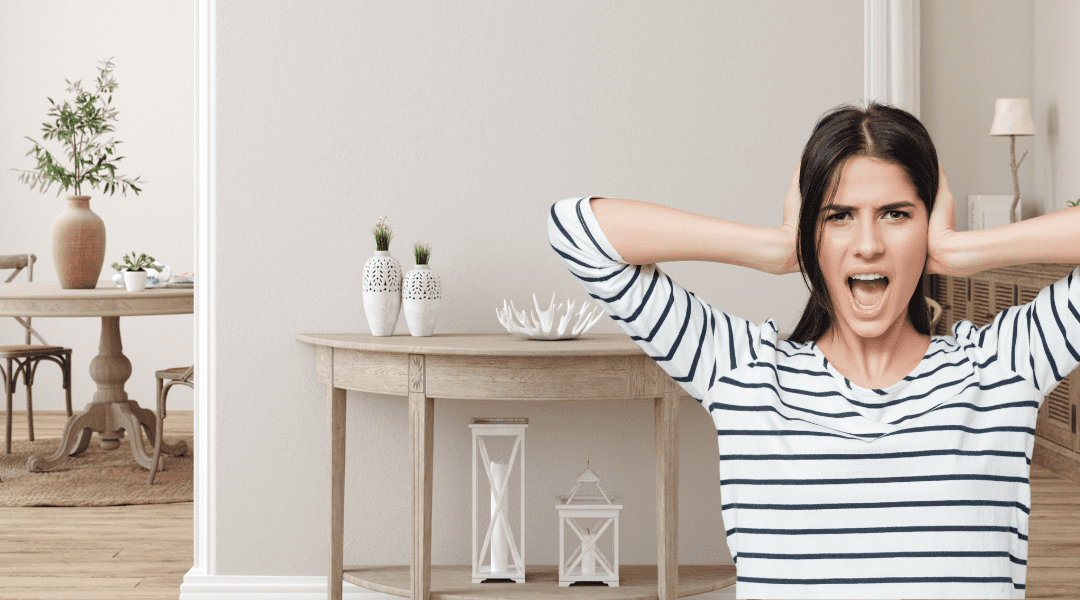Have you ever walked into a room and felt like you were in a giant empty hall, with every sound bouncing off the walls and echoing back to you? It can be annoying, right? This is exactly what happened to one of our clients, Sarah and James.
They moved into their beautiful new build home a few months ago and quickly noticed that something felt off. No matter where they went, from their spacious living room to their primary bedroom, every sound echoed throughout the house.
Conversations were hard to follow, and watching TV was a challenge with the constant reverberation. Sarah loved her new place but knew she needed to find a solution to make it feel more comfortable and inviting.
This is a common issue in many homes, especially with modern, open-concept designs. If you’ve been wondering how to reduce echo in a home like Sarah and James did, you’re in the right place. Let’s explore why this happens and what you can do to fix it.
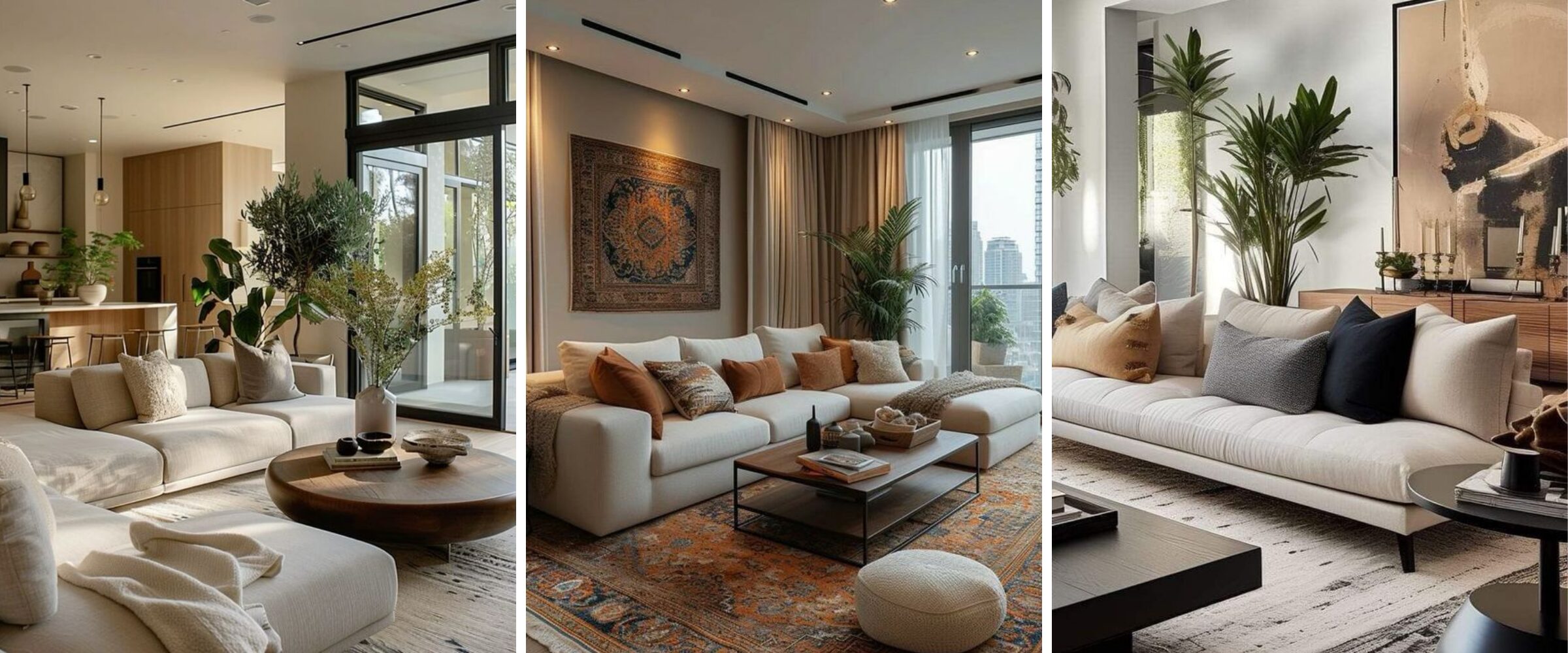
Images via Pinterest.
What is an echo?
Echoes happen when sound waves bounce off hard surfaces and come back to your ears after a slight delay. Imagine shouting in an empty gymnasium and hearing your voice come back to you. That’s an echo. In a home, it might not be as dramatic, but it can still be quite noticeable and annoying.
Here’s how it works: when you make a sound, it travels through the air in waves. When these sound waves hit a hard surface like a wall, floor, or ceiling, they bounce back. If there are a lot of hard surfaces and not many soft ones to absorb the sound, you’ll hear the echo.
So, if your conversations seem to have a lingering sound; or when you are watching TV or listening to music, it feels muddled or unclear; or if clapping your hands results in a noticeable reverberation, then you have sound echoing through your home.
Now that you know the basics of how sound waves work, it will help you figure out where the problem is coming from and what you can do to fix it.
What Causes Echo in a Home?
One of the biggest causes for an echo in modern homes I see is not using rugs. Years ago, when I was a child, most homes had wall to wall carpet and sound bouncing off their home wasn’t a problem. I bet a lot of you grew up with that too.
But in the last 20 years or so, hard flooring has become the trend. With the rise of hard flooring—wood, tile, or even concrete—homes today are more prone to echo. And while most folks can get their head around having a rug in a living room, most other spaces in a home go empty. This is a mistake. It’s a missed opportunity for sound control!
Many homeowners these days strive for a minimalist design with large, open spaces and fewer pieces of furniture. While this looks clean and stylish, it means there are fewer surfaces to absorb sound, causing it to bounce around more.
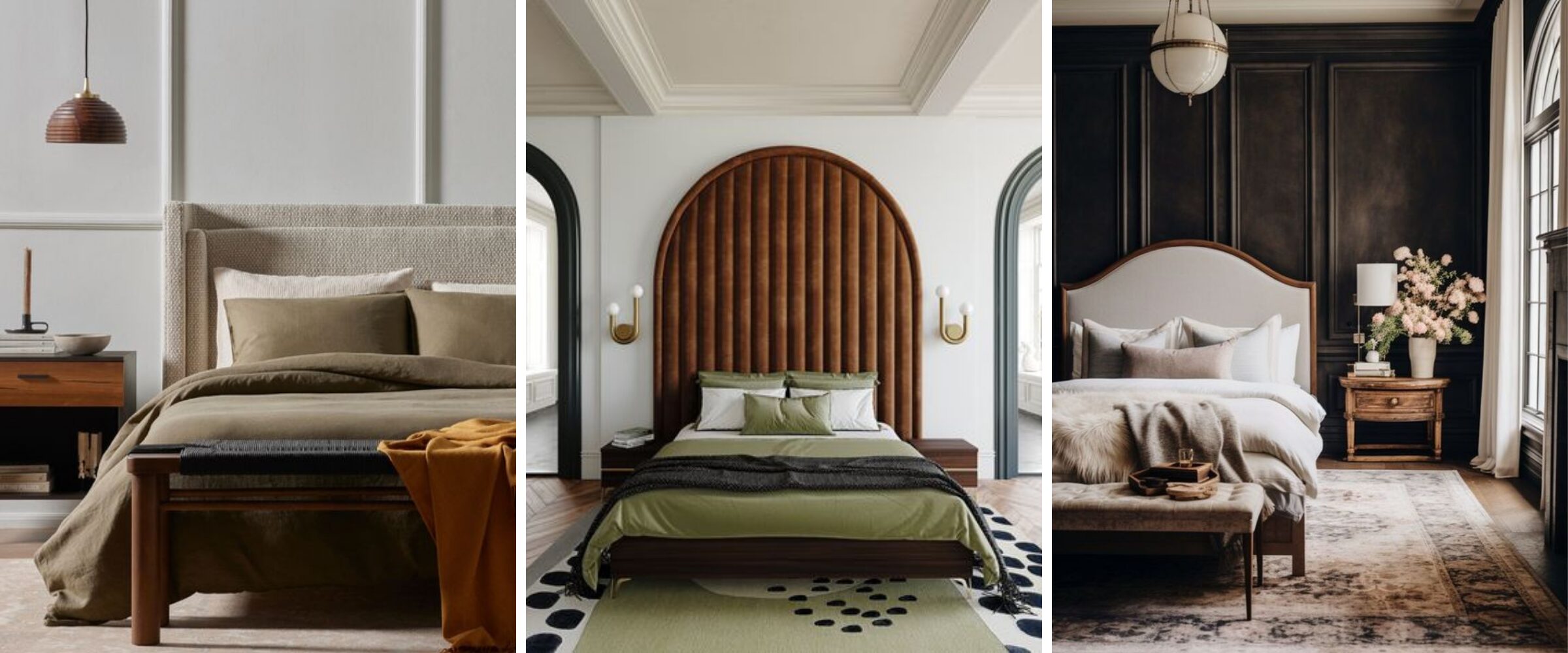
Images via Pinterest.
High ceilings, another coveted feature, contribute to the problem too. While they add a sense of grandeur to any room, they also allow sound waves to travel farther, creating more opportunities for an echo to occur. If you’re wondering why is there an echo in my house after upgrading to an open-concept or high-ceiling design, this could be the culprit.
Big windows and glass doors are fantastic for natural light but not so great for controlling sound. Glass is a hard, reflective surface, so it contributes to echoing just like hard floors and walls.
I bet many of these are features you really wanted in your home. So now that you have them, what can you do about all this sound that keeps bouncing off the walls and driving you crazy?
Now that you understand what causes echo in a home, let’s talk about how to fix it. Whether you’ve got an open-concept layout or are dealing with high ceilings, there are several easy and stylish ways to reduce echo.
1. Add Soft Furnishings
One of the easiest and most effective ways to reduce echo is by incorporating soft furnishings like rugs, carpets, and curtains. Soft materials absorb sound waves, preventing them from bouncing around.
Rugs help define spaces in open concept layouts and help make your space feel warm. But one of the biggest reasons to use rugs is because they absorb sound.
A well-placed rug can make all the difference, especially in rooms with hard floors. Try adding a plush rug in your living room or bedroom, or even in hallways and dining areas, to combat echo.
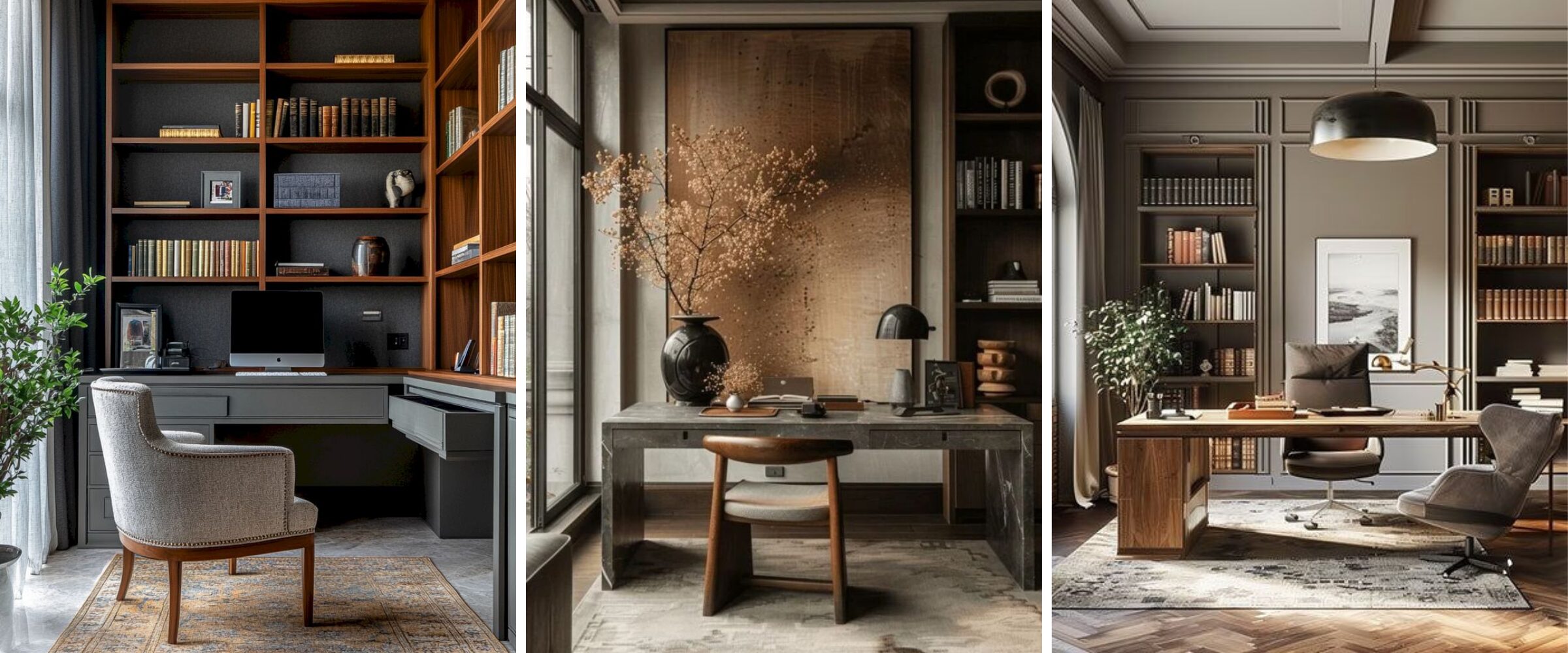
Images via Pinterest.
2. Arrange Furniture Strategically
Large, upholstered furniture like sofas and armchairs can help absorb sound. Instead of keeping everything against the walls, try floating your furniture in the room. This helps break up sound waves and reduces echo.
Bookshelves filled with books or decorative items can also act as sound absorbers. If you’re wondering how to fix echo in the living room, rethinking your furniture layout could be the key.
3. Use Wall Treatments
Bare walls reflect sound, but adding texture through wall treatments can help. Consider using wallpaper, fabric panels, or large artwork. These elements will not only enhance the design of your space but also help reduce echo by breaking up sound waves.
4. Install Window Treatments
Big windows may bring in tons of natural light, but they also contribute to sound bouncing around. Heavy drapes or acoustic blinds can help absorb sound. If you’re dealing with a lot of glass in your home, investing in thick, quality curtains will help minimize echo and create a more intimate, cozy atmosphere.
5. Add Decorative Elements
Decorative elements like plants, wall hangings, and cushions are great for reducing echo. They add texture and variety to your space, helping to scatter sound waves. This works especially well if you’re trying to reduce echo in an open-concept home where there are large areas for sound to travel.
6. Consider Acoustic Panels (If Needed)
Acoustic panels are specially designed to absorb sound. Although, as a design company, this is not our go-to solution to start with. From experience we know that if you use some of the strategies we discussed earlier, you will end up with a space that functions well for you and will look beautiful. Managing sound is a side effect of that approach.
However, if I didn’t tell you about acoustic panels, it would be amiss for sure! Acoustic panels come in various styles and materials, like fabric-wrapped panels, wooden panels, and foam panels. You can install them on walls or ceilings to significantly reduce echo. Ideally, the ones you choose are stylish and will blend in with your decor. We consider using acoustic panels as a type of a wall treatment.
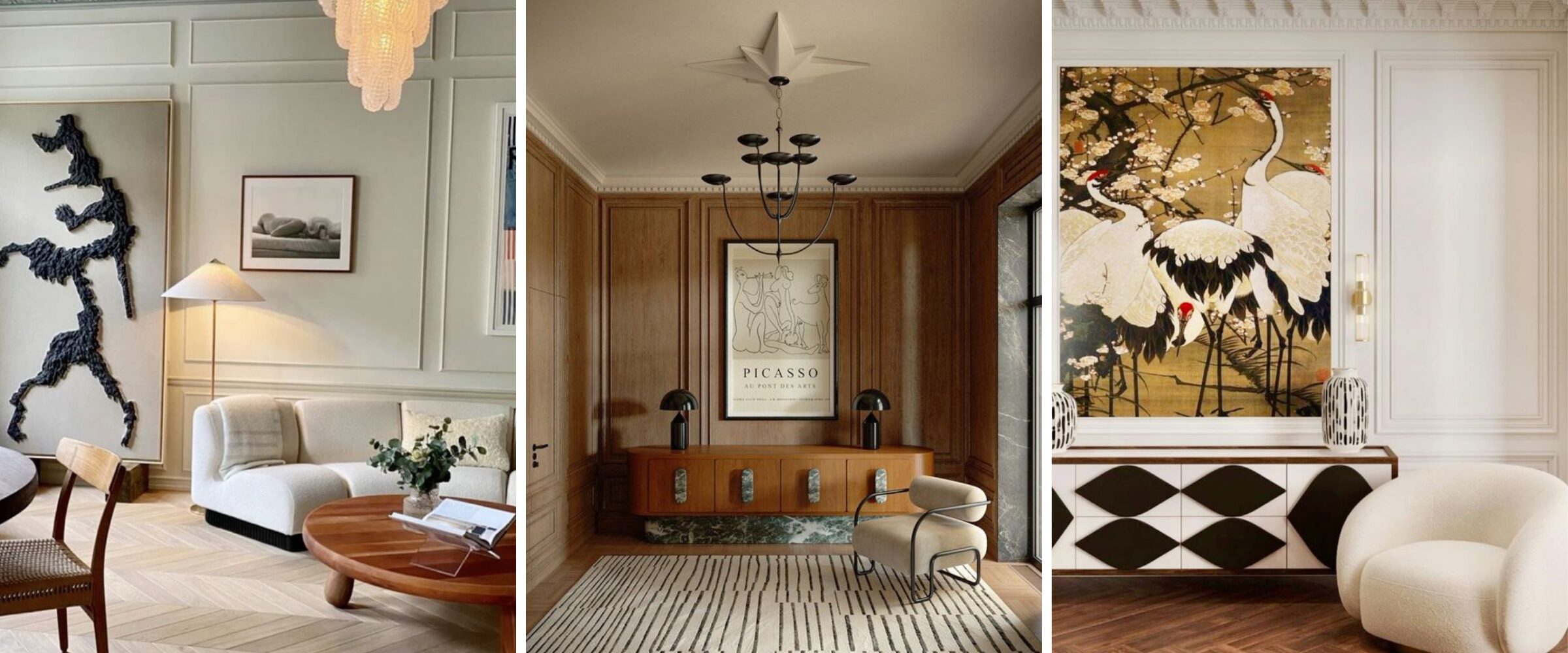
Images via Pinterest.
Additional Tools to Help Assess Sound in Your Home
If you’re curious about just how bad the echo is in your home, there’s an app called Decibel X that can help you measure sound levels. It’s not a free tool, but it might be worth exploring if you want to get technical about reducing echo, especially in spaces with high ceilings or hard floors.
Final Thoughts on Reducing Echo in Your Home
Dealing with echo in your home can be frustrating, but with a few simple changes, you can make a big difference. By incorporating soft furnishings, rearranging furniture, and adding wall and window treatments, you can significantly reduce the echo in your home, even in rooms with high ceilings or open layouts.
So, don’t let echoes ruin your enjoyment of your space. Take action today and start making your home sound as good as it looks. If you need help figuring out the best solutions for your home, reach out for a consultation. Let’s work together to make your home echo-free and cozy.

